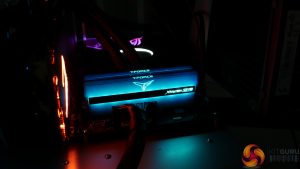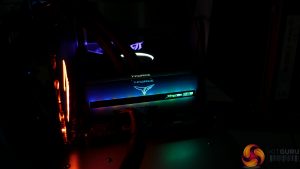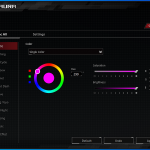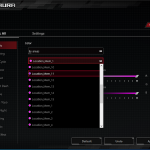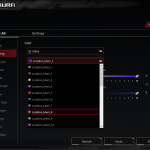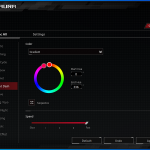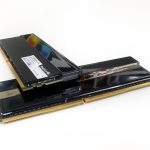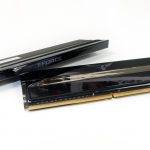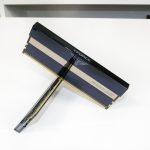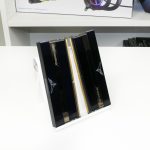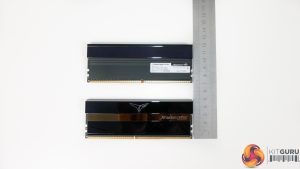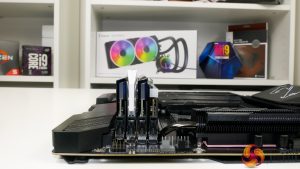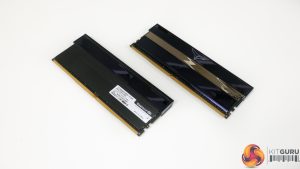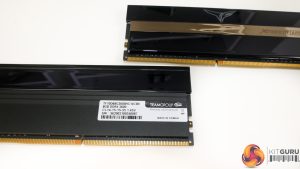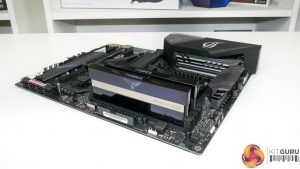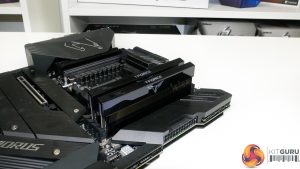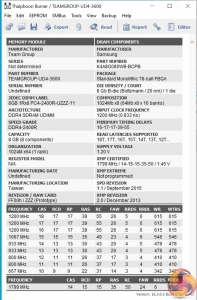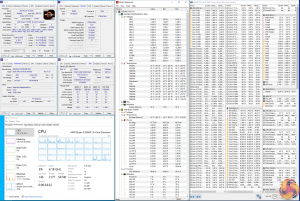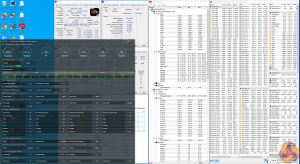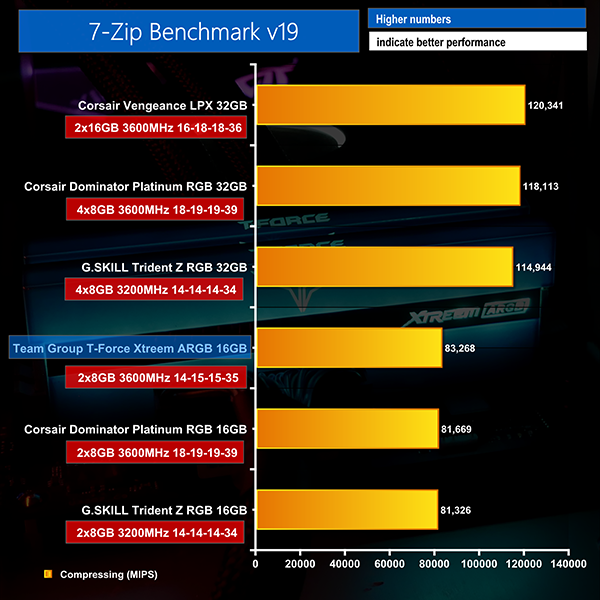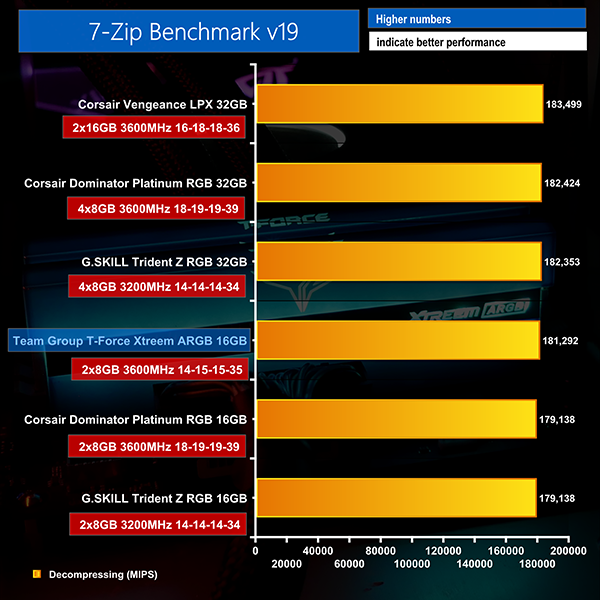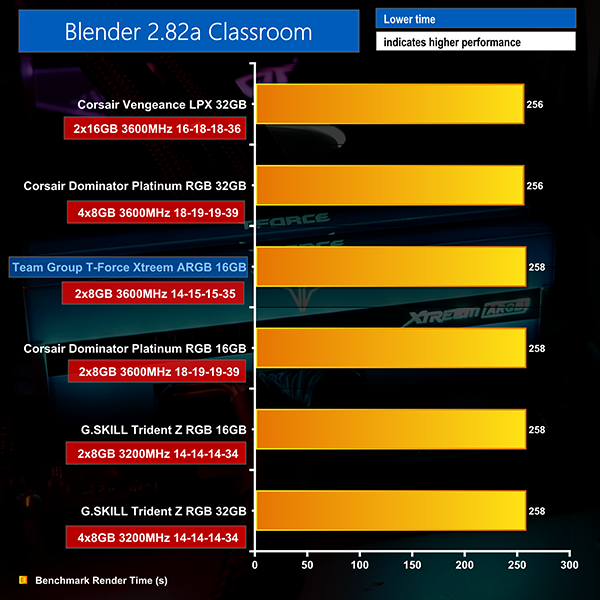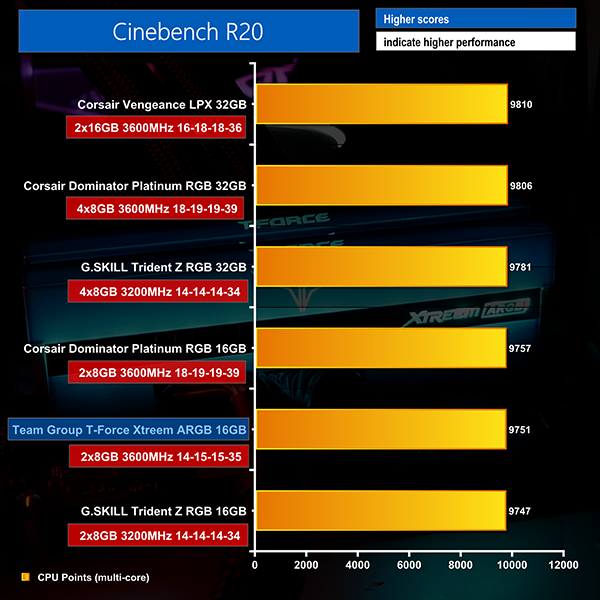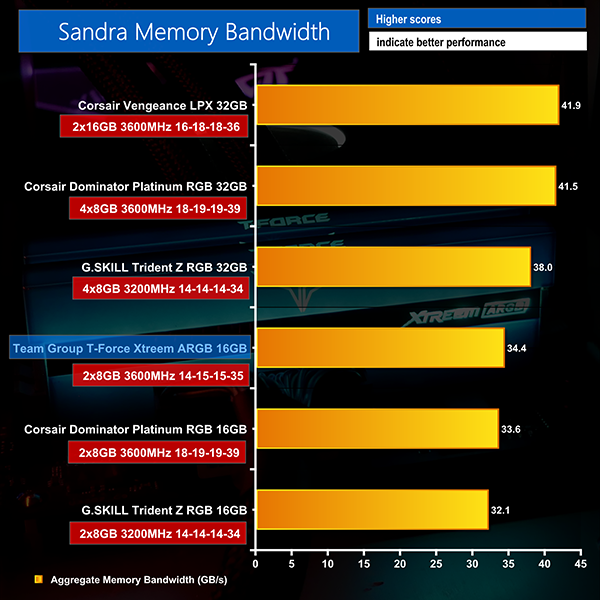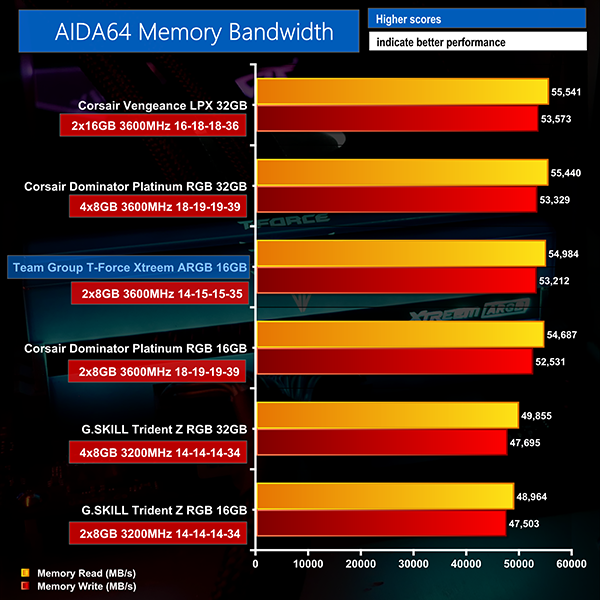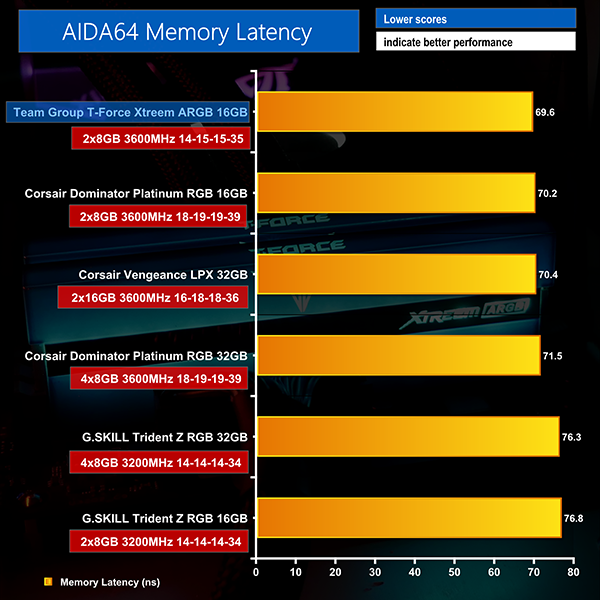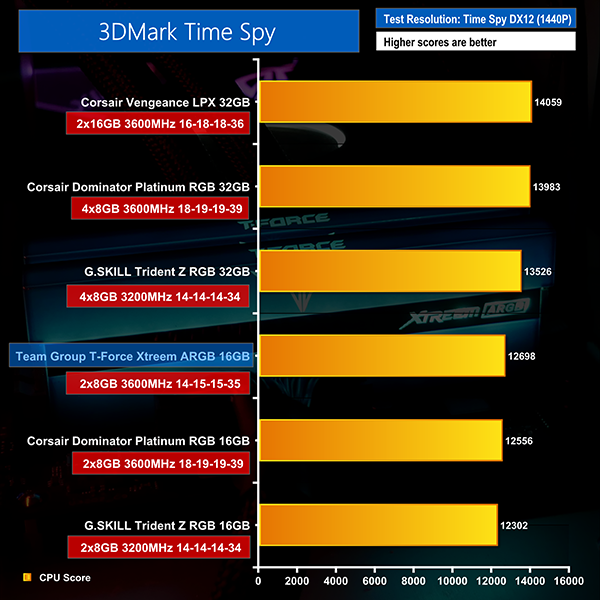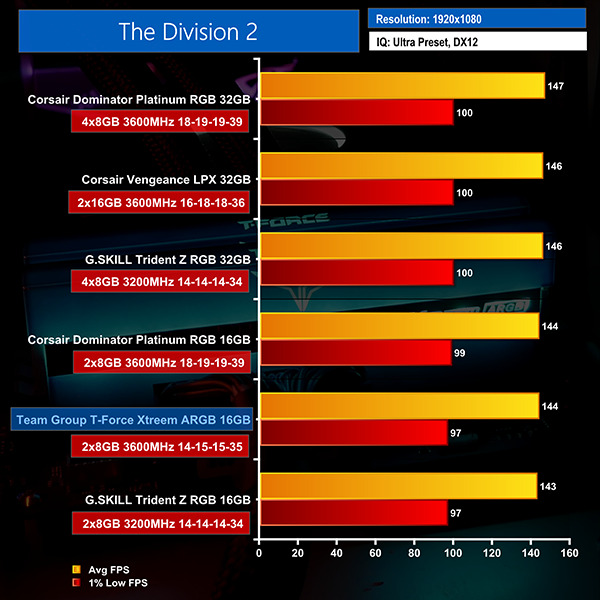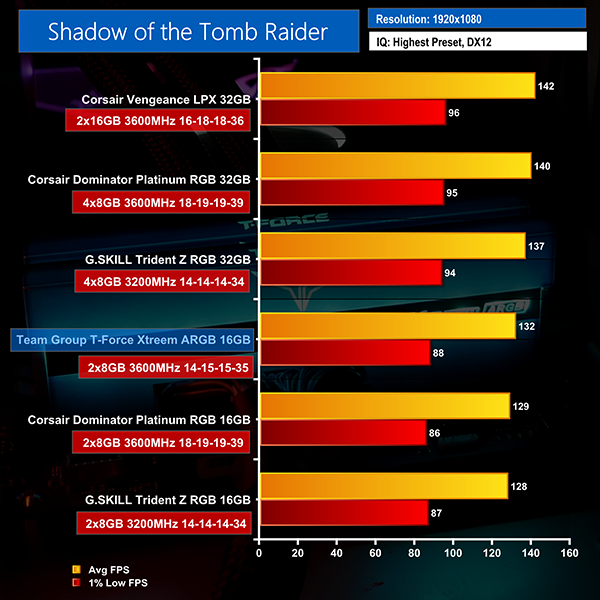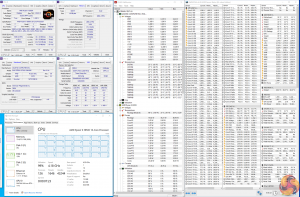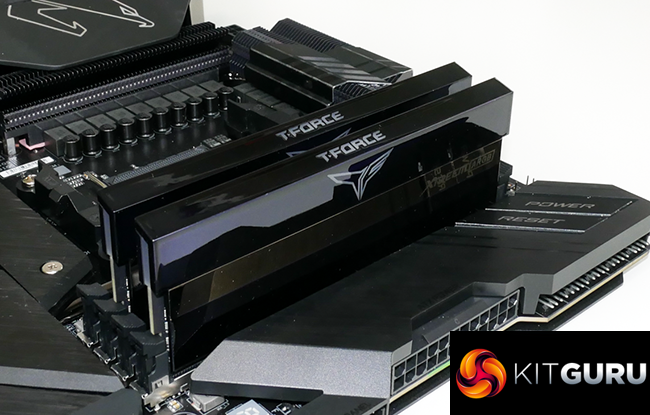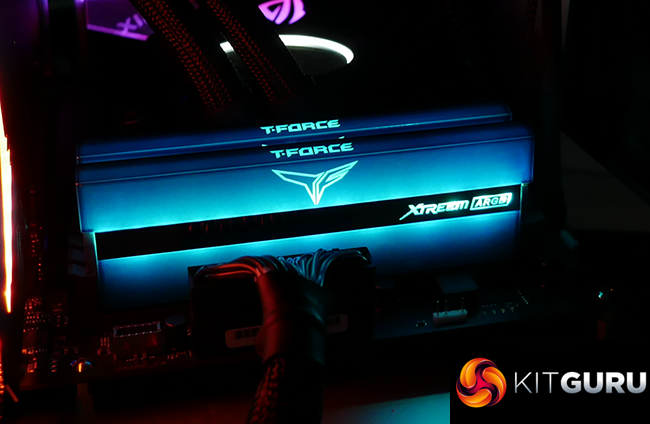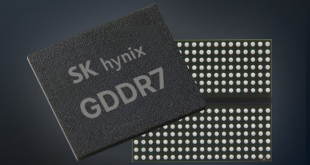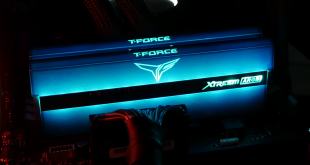
Fancy RGB lights and unique heatspreaders remain a logical way to differentiate otherwise similar sets of memory. This is exactly what Team Group does with the flamboyant T-Force Xtreem ARGB sticks that we have for review.
But there is certainly more to the kit than just flashy looks and bright lights. Rated frequency comes in at 3600MHz but the latencies run at an aggressive 14-15-15-35 using 1.45V. Could this be an excellent choice of memory kit for use with AMD Zen 2 processors?
Undeniably, the styling of Team Group’s T-Force Xtreem ARGB memory modules is a distinguishing feature. The sticks use a black aluminium heatspreader in combination with 15 zones of LEDs pumping out light through a mirror-finish type diffuser.
Personally, I like the LED styling which I would describe as well-balanced and surprisingly subtle in terms of light intensity. However, I also value the higher level of brightness observable on some competing modules such as G.SKILL’s Trident Z Royal or Capellix-equipped Corsair Dominator Platinum RGB modules. As always, RGB LED lighting preference is very much down to individual taste.
ARGB lighting is controlled through your specific motherboard software package. ASRock Polychrome, ASUS Aura, Gigabyte RGB Fusion 2.0, and MSI Mystic Light sync modes are all supported. In other words, you are covered if you’re using a motherboard from one of the ‘Big 4’.
This same approach is used by competing vendors, such as G.SKILL, and it is an approach that I am personally happy with. While the lack of a software application with specific control modes may be a disappointment to some, it also has strengths in my opinion.
You have to download one less RGB package, which is a good thing. More importantly, perhaps, is that it ensures better synchronisation between the motherboard and partnering hardware controlled under the single RGB software umbrella. This does, however, leave the capability of any ‘smart’ or ‘boutique’ lighting modes at the mercy of the motherboard vendor.
Compared to something like Corsair’s iCUE ecosystem, Team Group’s modules are probably at an overall disadvantage in terms of smart lighting modes. However, the motherboard software control for the Xtreem modules does enable easier synchronisation for many users compared to Corsair’s dedicated alternative.
And if you’re not particularly fond of RGB lighting or simply want to go without it from time to time, the heatspreaders have an appealing aesthetic with the lights switched off. A blue tint to the mirror-finish style heatspreader looks appealing. It is also unlikely to clash with specific colour schemes given its extremely dark blue tint that is more towards a neutral black scheme.
But if you’re going for the no-lighting approach with the memory kit, make sure you whip out the included cloth as the mirror-style light diffuser section is an absolute fingerprint magnet.
When it comes to physical sizing, the Xtreem modules are large. The chunky light diffuser wraps around the entirety of Team Group’s black PCB and extends module height to 49mm.
That will undeniably cause interference with some large air coolers, but we often see similarly sized modules from competing vendors and even taller and more intrusive modules from the likes of Corsair.
Shown in the picture above is (from left to right): Team Group T-Force Xtreem ARGB, Corsair Dominator Platinum RGB, Team Group T-Force Xtreem ARGB, G.SKILL Trident Z RGB.
Lighting and appearances are great, but the performance justification is also an irrefutable necessity. Team Group delivers strongly on this front.
The specific 2x8GB Xtreem ARGB kit that we have for review runs at 3600MHz clock speed with 14-15-15-35 timings. The clock speed is somewhat mediocre in today’s marketplace, but the timings are incredibly tight even for a 3.6GHz DRAM clock.
The key benefit of DDR4-3600MHz is out-of-the-box usage on Zen 2 processors with a 1:1 Memory Controller: Infinity Fabric divider. Higher RAM speeds such as 4000MHz force a 2:1 divider that imparts a significant, undesirable latency penalty.
Team Group achieves these specifications by taking the very well-respected Samsung B-die memory ICs and running them at 1.45V. That’s a little higher than some people are comfortable with from a voltage perspective, but the rated frequency and timings point clearly towards strong performance on the AMD platform.
3600MHz and CL14 with Samsung B-die ICs sounds like a dream memory kit for AMD Zen 2 users, despite the relatively high operating voltage. Let’s see if that is indeed the outcome.
Specifications:
- Model Number: TF10D416G3600HC14CDC01
- Capacity: 16GB (2x 8GB)
- Rated Frequency: DDR4-3600MHz
- Rated Timings: 14-15-15-35
- Voltage: 1.45V
- Format: Non-ECC Unbuffered 288-pin DIMM
- RGB Lighting: 15 individually controllable ARGB LED zones
We will be outlining the Team Group T-Force Xtreem ARGB DDR4 memory’s performance with the AMD Ryzen 9 3950X CPU, ASUS ROG STRIX X570-E Gaming, and an Aorus RTX 2080 Ti XTREME graphics card.
Test System:
- Processor: AMD Ryzen 9 3950X overclocked to 4.2GHz all core.
- Motherboard: ASUS ROG STRIX X570-E Gaming.
- Graphics Card: Gigabyte Aorus RTX 2080 Ti XTREME 11G (custom fan curve to eliminate thermal throttling).
- System Drive: WD_Black SN750 SSD.
- Games SSD: Aorus PCIe Gen 4 2TB SSD.
- CPU Cooler: Fractal Celsius+ S28 Prisma 280mm AIO.
- Power Supply: Seasonic Prime TX-1000 1000W.
- Case: Lian Li Open-air Test Bench.
- Operating System: Windows 10 Pro 64-bit.
Comparison Memory Kits:
- 2x8GB G.SKILL Trident Z RGB DDR4 3200MHz 14-14-14-34 (Samsung B-die)
- 2x8GB Corsair Dominator Platinum RGB (White) 3600MHz 18-19-19-39 (Micron E-die)
- 4x8GB Corsair Dominator Platinum RGB (White) 3600MHz 18-19-19-39 (Micron E-die)
- 2x16GB Corsair Vengeance LPX DDR4 3600MHz 16-18-18-36 (Samsung B-die)
- 4x8GB G.SKILL Trident Z RGB DDR4 3200MHz 14-14-14-34 (Samsung B-die)
7-Zip Compressing
Starting with 7-Zip compression, we see the low latency Team Group kit offering up good performance for a 16GB set. The Xtreem ARGB operating specifications make it a little faster than Corsair’s competing Dominator modules, but the extra memory ICs of the higher-capacity kits win out in this test.
7-Zip Decompressing
Decompressing scores better on the high-speed Team Group 16GB kit. Again, we see the tight Xtreem ARGB modules at the front of the 16GB pack and this time just a little behind the higher capacity competitors.
Blender Classroom
Blender shows minimal performance gain from tight 3600MHz memory, as proven by Team Group’s equal performance versus alternative 16GB kits.
Cinebench R20
There is also little difference in performance when looking at Cinebench results. Here, the Team Group kit is practically equivalent to the performance of the competing 16GB kits, implying that tighter timings are of minor benefit in this test.
SiSoft Sandra Memory Bandwidth
Memory bandwidth numbers from the 3600MHz C14 sticks are solid, thanks to their optimal Zen 2 frequency and tight timings. Higher bandwidth numbers from the 32GB sets come at the cost of typically higher retail prices.
AIDA Memory Bandwidth
AIDA’s memory bandwidth test is a little more frequency biased, hence the Team Group kit shows minor outperformance versus Corsair’s Dominator competitor with looser timings.
AIDA Memory Latency
Latency performance is clearly an area of strength for the 3600MHz C14 modules. Solid frequency, slick timings, and the beneficial 1:1 divider with Zen 2 makes for excellent latency performance from the Xtreem ARGB-based memory subsystem.
3DMark Time Spy
Again, we see the Team Group and its tight timings deliver solid performance and this time in 3DMark. The 3600 C14 kit’s numbers are slightly better than those offered up by our 16GB competitor but cannot match the performance from the more expensive dual rank 32GB options.
The Division 2
The performance hierarchy remains consistent in The Division 2, with the higher density 32GB kits taking up chart-topping positions. This time, however, Corsair’s 3600MHz C18 Micron E-Die-based modules offer a slight performance bump over the tighter Samsung B-Die Team Group kit.
We saw similar behaviour for the 32GB sets, which implies a very minor preference for Micron E-Die ICs in this game, albeit by a margin that is very close to the realistic error range for our testing.
Shadow of the Tomb Raider
Shadow of the Tomb Raider consistently proves to be sensitive to memory settings, and this allows the Team Group Xtreem ARGB kit to offer stellar performance. Here, the 3600MHz C14 kit is a handful of FPS faster than the competing, slower 16GB solutions. The higher capacity kits are faster, but they are also more expensive.
Team Group’s tight 3600MHz kit does well here.
Overclocking
Some quick overclocking testing highlighted extremely strong performance from our specific sample kit. We bumped the voltage a little higher to 1.5V to simply see what the kit was capable of. This allowed us to hit 3733MHz with the stock CL14 timings. Importantly, 3733MHz DRAM clock allows us to maintain the strong benefits of a 1:1 Infinity Fabric divider by overclocking the fabric clock to 1866MHz.
Sticking with this strong 3733MHz result and the preferential Infinity Fabric speed, we moved on to tightening the timings to see how much further we could push. We managed to squeeze the timings down to 14-13-13-34 with quick stability validations in Windows. Trying to push the CAS Latency below 14 was unsuccessful in our testing, but some of the other timings were more willing to be pushed lower than their stock ratings. More time would likely achieve better results and the switch to the Intel platform may allow for higher frequency.
But we were certainly very impressed to run at 3733MHz with tight 14-13-13-34 timings. That is a very strong result in our opinion and makes the kit a superb partner for Zen 2 processors.
Out of the box performance from the Team Group T-Force Xtreem ARGB memory kit is excellent thanks to the eye-catching 3600MHz CL14 headline specifications. This serves us well on our AMD Zen 2 test platform and is realistically a superb balance between DRAM clock speed and tight timings.
The kit’s use of Samsung B-die memory ICs also proves beneficial, with the performance results in real world testing falling in line with expectations from the kit’s frequency and competing well against Micron’s E-die alternative.
Overclocking performance was also impressive based on our quick testing. It’s just a little disappointing to report the lack of temperature sensor data from the modules to check the temperatures were in check. Not that we had any temperature concerns; we simply think it is reasonable to expect temperature sensor data from a premium memory kit of this calibre.
In today’s market, a memory kit is as much a showpiece item as it is a performance piece of hardware. The Xtreem ARGB modules score very well on the ‘showpiece’ front. That alluring design is driven by a sleek black aluminium heatspreader and a well-built, all-around diffuser that uses a mirror-type finish. Add in the 15-zone LED control on the modules and the overall package provides superb aesthetics.
Understandably, RGB lighting preference is very subjective. Personally, I like the subtle appearance of the Team Group Xtreem ARGB modules as the lighting is bright but not over-the-top or in-your-face. With that said, I can see why other people may prefer the brighter and different appearance of G.SKILL’s competing solutions, or the clean aesthetic of Corsair’s Dominator Platinum RGB offerings.
Whatever your preference is, my feedback is heavily leaning towards putting the Team Group Xtreem ARGB modules in the upper echelon of RGB memory kits in terms of aesthetics. In my opinion, it’s a toss-up between the Team Group, Corsair, and G.SKILL modules for the best looking memory on the market. And that is strong praise for Team Group, especially as they go about delivering their styling in a unique form.
I guess the main disappointment (and strength, depending on your preference) with the lighting appearance is the lack of dedicated control software. This leaves you at the mercy of your motherboard vendor’s RGB software, as is the case with competing vendors such as G.SKILL. With Corsair competition, however, you have the stronger abilities of iCUE control at the expense of having to install the sometimes resource-heavy iCUE software on your system.
The positive and negative of this software point is very much down to your individual preference.
At around $160-$180 in the US for the 16GB 3600MHz C14 Xtreem ARGB kit, Team Group is certainly charging a premium for the high-spec Samsung B-die ICs and excellent aesthetic design. UK availability should be coming online in October and a conversion from US pricing would put this kit at around £150-£160, though this is my estimation and has not been confirmed.
The key competitors at this price point come from the G.SKILL Trident Z Neo and Royal modules that we have already highlighted, as well as Corsair’s Dominator Platinum RGB sticks. Team Group’s modules tend to be a little cheaper than G.SKILL’s competition according to Newegg pricing. Not that $10-or-so here and there makes too much difference for memory at this price point.
Whichever way you look at it, the Team Group T-Force Xtreem ARGB modules are highly expensive, premium memory modules that trade blows with some of the market elites from Corsair and G.SKILL. Value is clearly not great against less flashy memory kits with slightly looser timings; you can get 32GB 3600MHz RGB memory kits for similar money if you are happy to accept notably looser timings.
But with 3600MHz CL14 timings using Samsung B-Die ICs and a superb, unique styling that is competitive against the market leaders, I have no problems making a solid recommendation for the Team Group T-Force Xtreem ARGB kit if you’re looking for a boutique set of system memory.
This memory kit has not yet arrived in the UK, but US pricing appears to be between $160-180.
Discuss on our Facebook page HERE.
Pros:
- Strong performance numbers from Samsung B-die ICs.
- Excellent latencies for DDR4-3600MHz.
- Superb overclocking capability.
- Good LED capabilities and appearance, in my opinion.
- Excellent choice of specifications for AMD Zen 2 usage.
- Reasonable price versus comparable spec kits such as Dominator Platinum RGB or Trident Z Royal.
- No proprietary/additional RGB LED software forced upon users.
Cons:
- No temperature sensors.
- High price for a 16GB kit and currently limited availability.
- Minimal advanced lighting modes – at the mercy of motherboard vendor software.
- Wrap-around light diffuser is a fingerprint magnet, though a cloth is included.
KitGuru says: With premium looks and performance, the Team Group T-Force Xtreem ARGB 3600MHz CL14 kit has us impressed.
 KitGuru KitGuru.net – Tech News | Hardware News | Hardware Reviews | IOS | Mobile | Gaming | Graphics Cards
KitGuru KitGuru.net – Tech News | Hardware News | Hardware Reviews | IOS | Mobile | Gaming | Graphics Cards


